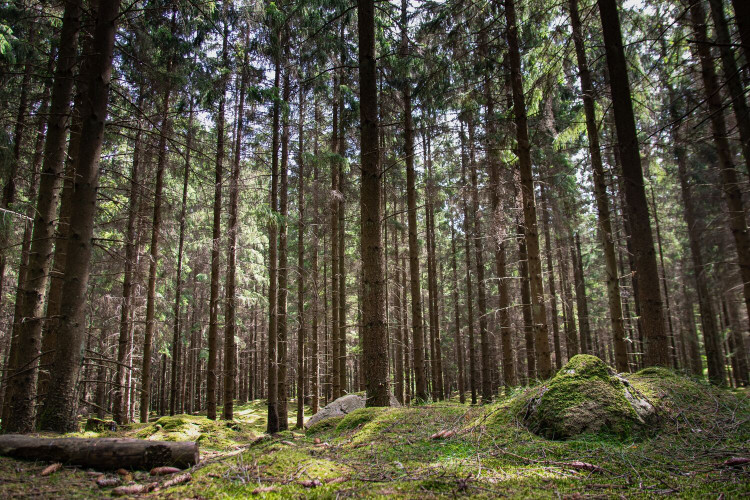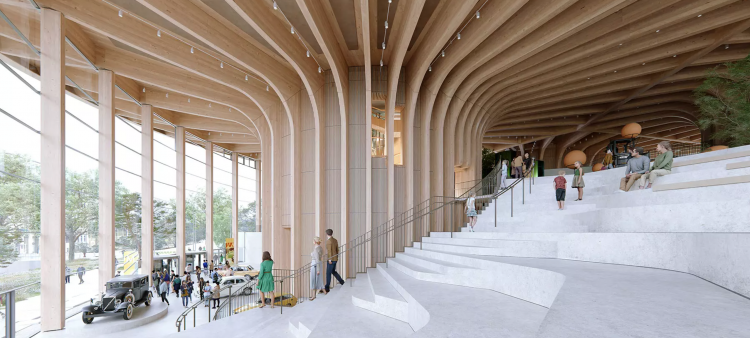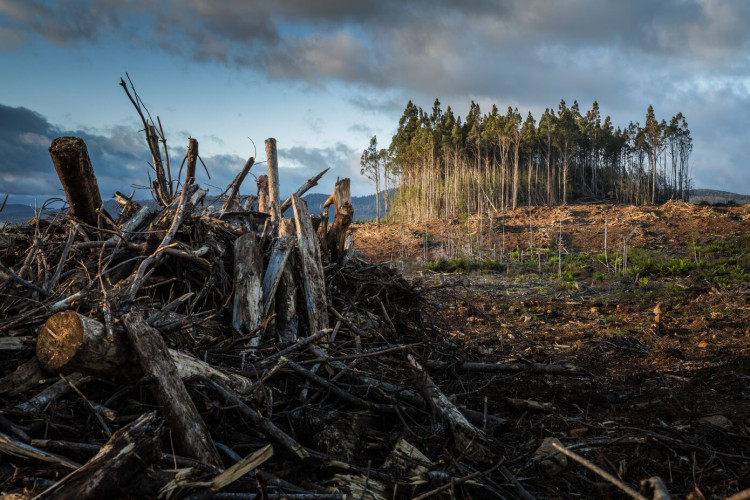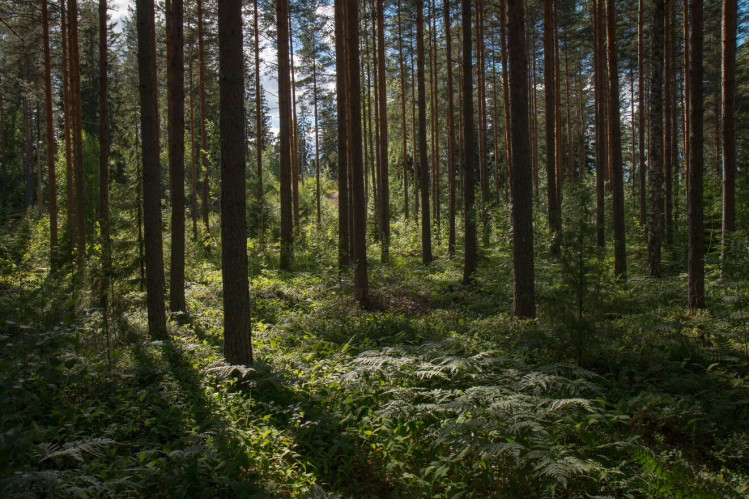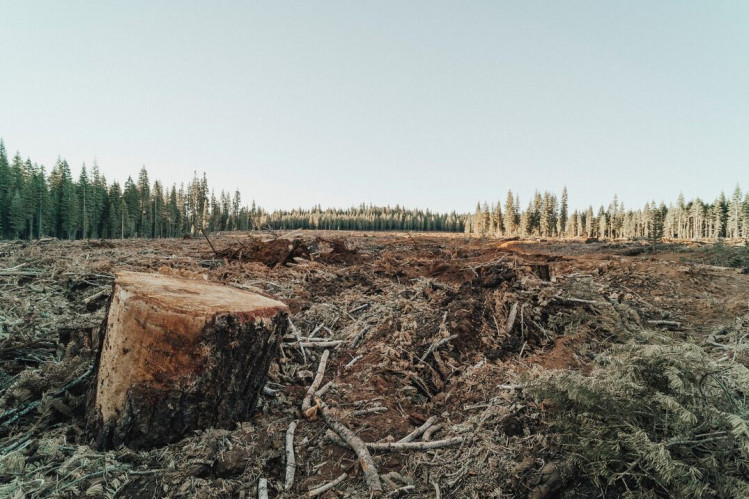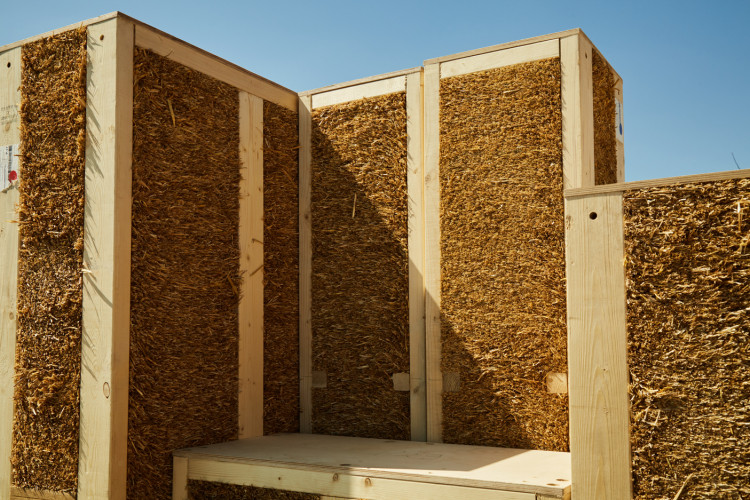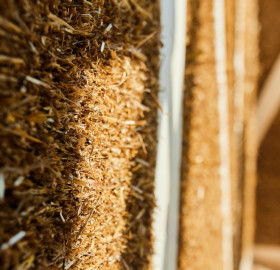Let us spin a magical time-turner. A few turns should do the trick.
We find ourselves entering the second half of the 20th century. The old continent is reeling from devastation, supplies are running low, most buildings are in desperate need of repair or replacement. The use of wood in construction has declined significantly. The centre stage has been overtaken by concrete and steel, which have become cheaper and more readily available than ever thanks to new technological advancements. A clear choice for modern, industrialised cities.
Fast-forward 70 years, timber seems to once again be claiming the spotlight. Never mind residential buildings; innovators are proposing a new greenprint for the future – timber skyscrapers and even entire cities made of wood. A bold vision, nevertheless underpinned with sound reasoning.
Today’s world faces very different challenges to which timber holds good answers. It is natural, renewable, biodegradable and stores, rather than emits, carbon. It is also fit for the task from a technical standpoint; of this there’s little doubt. The relatively recent introduction of engineered wood products – strong and durable structural elements, such as CLT – has elevated timber construction to new heights. Quite literally. The tallest timber building in the world as of 2023, the Ascent in the US, towers at 86 metres.
But is it possible we are missing the forest for the trees? Before commencing a large-scale shift to wood-based construction and conversion of trees into buildings, it would be prudent to ask some questions:
- Is it truly sustainable?
- Do we have enough wood for such a shift?
- And how would it affect our forests?
Let’s investigate.
Green challenger to concrete rises
As early as 2013, architect Michael Green gave a popular and timely TED talk proposing timber skyscrapers as a solution for an industry that is – subtly but surely – responsible for nearly 40% of the world's greenhouse emissions. As the effects of changing climate are becoming increasingly apparent, more and more advocates of timber construction are coming out of the woodwork. A sight most welcome.
From Setas de Sevilla in Spain to the mass timber World of Volvo centre in Sweden, prominent architectural studios are rediscovering the versatility and beauty of the material. “Architecture is currently in the midst of a timber renaissance, with new milestones in timber construction being reached at breakneck pace” – Filip Francati, Lead Design Architect at Henning Larsen.
While its aesthetic value is hard to overstate, for architects wood can be a powerful tool for reaching sustainability goals. A single m3 of timber sequesters roughly 1 tonne of CO2.
Trees absorb CO2 during growth and ultimately release it into the atmosphere by burning or decomposing. At least, that would be the natural process, unless industrious evolved apes were to intervene and make the wood into a building. In that scenario, the carbon would be safely stored in the structure and taken out of the equation for generations.
Such artificial intervention could be even more valuable if we consider some forests are barely carbon-negative. When accounted for natural disturbances, they can even be net-emitters. Young trees absorb a lot of CO2 in the early stages of growth, but the amount is diminished as they reach maturity and start shedding needles and branches that decompose, releasing some of it back. A natural cycle. Selective harvesting removes mature trees, which are then replaced by planting new ones with great CO2 appetite.
That said, let us bear in mind this is an oversimplified picture, as carbon dynamics in forest ecosystems are a complex topic with many variables and ongoing debates on how to account for them.
Nonetheless, a recent study by researchers at Aalto University and the Finnish Environment Institute has dived into the carbon sequestration potential of wood on a European level. Among other findings, it estimates that building 80% of new residential buildings in Europe with timber would offset nearly half of the emissions produced by Europe’s cement industry – about 55 million tons of carbon dioxide per year.
Those are encouraging numbers, but there are caveats. Aren’t there always?
Barking up the wrong tree
Naturally, the prospect of increasing wood harvest to accommodate growing demand immediately brings to mind a common concern – deforestation. While it is true that on a global scale the planet is experiencing a net loss of forest area, the key piece of the puzzle is that this is mostly due to agriculture. The tropics are losing forests at an alarming rate, often measured in football stadiums per minute, to make room for plantations.
In contrast, Europe has actually been slowly replenishing and expanding its forests in recent years. In fact, there is more forested area in Europe today than at any other point in time since the First Industrial Revolution. According to the European Forest Institute, in the past 70 years there has been an increase of 37% in forest area and 138% in growing stock. Wood production has increased by 87%.
Inability to grow exotic crops notwithstanding, one of the main reasons behind the disparity is that European forests are, by-and-large, managed in accordance with FSC and PEFC principles. Forest Stewardship Council is an NGO dedicated to preserving forests and biodiversity. Their primary activity is issuing certifications and developing guidelines for sustainable forestry. Managing a forest sustainably entails precisely what one might expect, but let’s specify.
Trees that are cut down are carefully selected. Only mature or mature-diameter trees are chosen while leaving younger trees untouched. A minimum age is sometimes established, and harvested trees are replaced by planting native tree species or species appropriate to the region. This practice minimises the impact on the forest ecosystem and ensures that the forest can regenerate naturally.
FSC standards also often require the protection of ecologically sensitive areas, such as wetlands or habitats of endangered species. These areas are typically excluded from harvesting activities. To ensure these criteria, regular assessments of forest health, including monitoring for pests and diseases, are conducted periodically.
It is worth noting that, of course, not all forests in Europe are sustainably managed, and fewer still abide by the principles fully. However, FSC-certified or not, there’s undeniably been a significant improvement, with renewed forests standing as living proof.
With that said, it may be beginning to seem like wood is plentiful and we can harvest away without a second thought. Unfortunately, we’re not out of the woods yet.
Uprooting the plans
Knock on wood, it seems we’re not in danger of deforestation anytime soon. At least not in Europe or North America, that is. However, planning on building cities and homes for an additional 3 billion people in the next 50 years, entirely out of timber, may still be on the optimistic side.
As of 2017, the market share of wood-based construction in Europe (one of the more significant wood construction markets in the world) was below 10%. Lack of data and research makes it difficult to predict what a massive increase to this number would look like, but there are compelling reasons to assume it would quickly go down a deforested hill.
Planting new trees is decidedly a good thing, but the intention to use their wood for construction in the future might be derailed by the very thing it seeks to mitigate – climate change. A shift in temperature and precipitations disrupts the health of trees, as they find themselves growing in an increasingly unsuitable climate for their species.
Temperature increase is detrimental to trees in and of itself, but warmer and drier conditions also lead to more forest fires and proliferation of invasive insects. The European spruce bark beetle, for instance, can completely wipe out huge swathes of forests. That is an ecological and economic disaster, especially once we realise not all wood is suitable for construction purposes. Spruce and fir are the most commonly used tree species. Furthermore, spruce typically has shallow roots which makes it vulnerable to extreme storms.
Additionally, wood is used in production of a great variety of different products beyond its primary function. It is much like oil in this regard. As the population increases, the demand for non-construction wood-based products will scale with it and competition for the resource will grow.
Relying on future growth is a bit like counting our chickens before they hatch. Despite having more forests than ever, the supply of timber can still be volatile. Even today, suppliers can easily run into problems.
The best of all worlds
As architect Michael Green said, when people enter a building made of timber, they often feel tempted to touch the material – something they never do with steel, bricks, or concrete. There is something special about it… something pleasant that attracts us. And massive all-timber architectural pieces like Setas de Sevilla are without a doubt wondrous to behold.
But here is a good way to conceptualise wood construction: How long would it take for those buildings to regrow? How fast can our timber homes grow back? The answer is decades.
A key takeaway here should be that wood is both a great tool and a precious resource. One that should be used more, yes, but sparingly and intelligently. If going bio-based is the solution to the construction quandary, our toolbelt is more versatile than just timber. Compare its 40 year-long harvest cycle with straw, which grows each year, also stores CO2, yet is a residual product of a completely unrelated industry – agriculture. Or clay, which is just as abundant and available everywhere.
A hypothetical ‘100% of buildings stock made of timber’ scenario would not be feasible, but in combination with materials like straw, clay, hemp, cork, cellulose, wood fibre, and many others, the amounts of steel, concrete and mineral insulation in construction can be minimised. That is a way to fully reap wood’s benefits while also preserving the environment.

